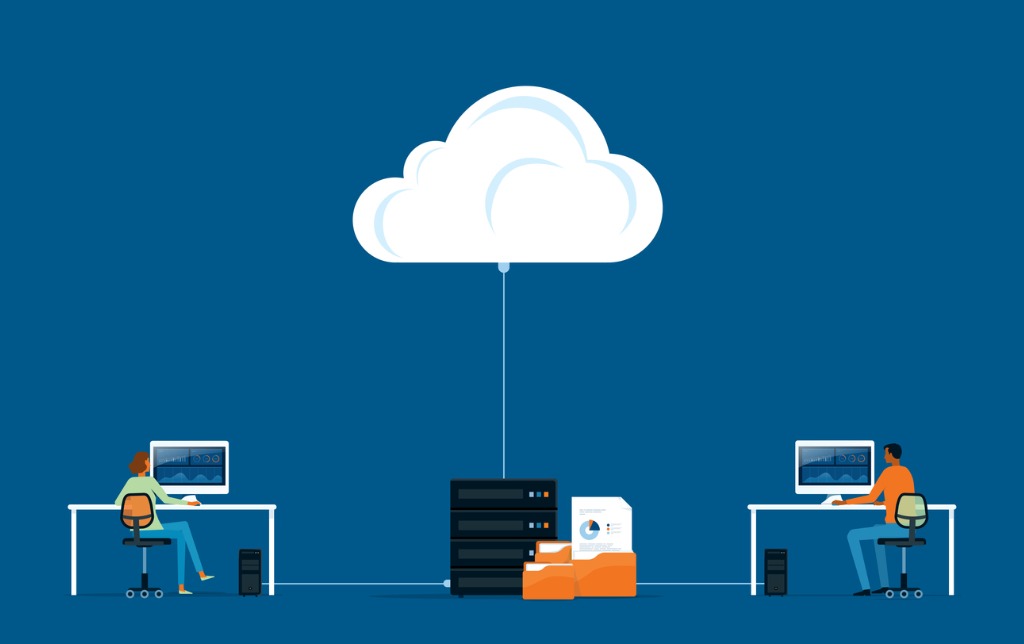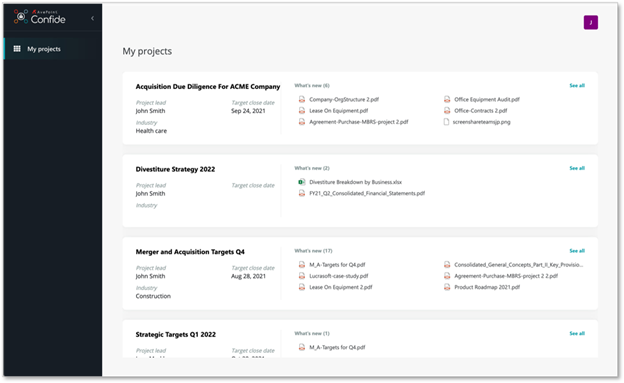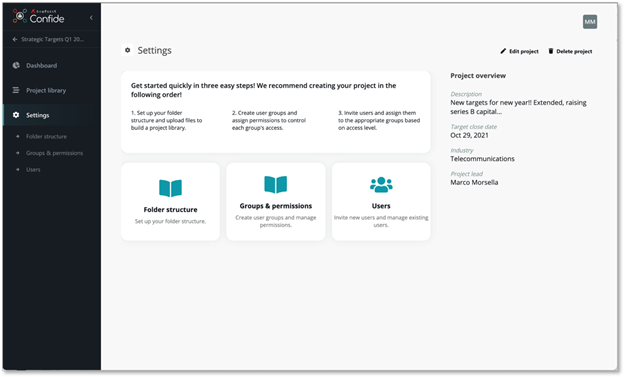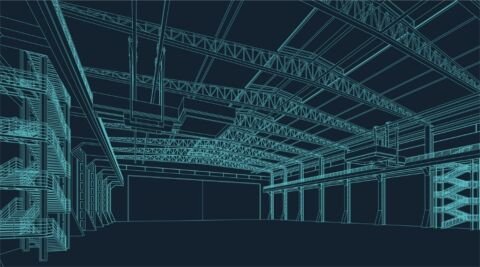As a result of the COVID-19 pandemic and the mainstream adoption of remote work, the last few years have seen more and more sensitive information shared virtually. While this may save time and trees, there are risks associated with digital sharing. It’s important to remember not all data is the same, and standard security measures might not be enough to protect your most sensitive information. The risks of oversharing or improper access are just too high, and the results of exposure are simply too significant. This is where a virtual data room comes in.
If you are looking to share private information electronically, you’ve probably heard of virtual data rooms. A virtual data room—sometimes also called a VDR, electronic data room, virtual deal room, data room, or private virtual room—is a highly secure online document repository and collaboration space for sharing, storing, and collaborating on your most sensitive projects.
Think of it like an ironclad safe room in your home, full of locked file cabinets. There is only one way in and one way out, you decide who is given access, and personally hand them a key to the file cabinet they need.
Whether you are working on mergers, acquisitions, divestitures, real estate contracts, fundraising, IPOs, or auditing, any joint venture can benefit from having a secure space like a VDR to store and share information.

Can a VDR help you? Well, check out some of the top benefits.
1. A Virtual Data Room Provides the Utmost Security
When you’re working on high stakes projects, you are likely sharing or exchanging confidential information with external parties. Already a risky process, the stakes are made higher by the value of the sensitive information being disclosed. If your sharing is not secure, you could become a prime target for cybercriminals.
Even if you don’t catch the attention of hackers, your information could be compromised by negligent employees or accidental overexposure. Whether intentional or not, you still face the same potential consequences: operational disruptions, reputational instability, or even financial damages. With everything on the line, the data protection offered by other content management tools like Microsoft SharePoint, Google Drive, or Dropbox just doesn’t cut it.
VDRs get ahead of all of this and protect your data from the outset. Any user entering the VDR must be pre-authorized. Through strict permissions, admins can assign access and capabilities on a user-by-user basis, ensuring no one has access to your information unless you explicitly want them to. You can also track who’s viewed, downloaded, or edited documents to easily follow the data trail.

By keeping confidential project data in a virtual data room rather than a general content collaboration platform, your data is encrypted, stored in an entirely separate, locked down location, and not co-mingled with any other enterprise content—all of which provide next-level protections.
While many modern VDRs are cloud-based, AvePoint’s Confide is the only virtual data room hosted within your own Microsoft 365 tenant. By keeping your data close to home, you can avoid data sovereignty issues and mitigate traditional IT security concerns.
While nobody plans to fall victim to an intentional or unintentional data breach, VDRs offer peace of mind that your sensitive information is protected.
Read more: 5 Steps to Support Safe Collaboration for Hybrid Work
2. Configuration and Management is Made Easy
VDRs are more than just their impressive defenses; they also offer high usability for all end users.
When working with sensitive information, only those who need to know should be in the know. However, if you use a traditional content management platform for external sharing, your IT team is at the helm; they need to wrangle a complex web of granular permission levels and deeply nested folder structures, even though they don’t have any real insight into the project or the folder contents.
That’s why VDRs were designed to be front-office solutions, giving full control and transparency to business end users. The platform preserves IT resources by allowing executives and project managers to manage their specific, ad hoc confidential projects, often several at a time, all in one centralized location.

Even those with novice technology skills can manage their virtual data room and project workspaces safely without the support of their IT teams, ensuring that only those necessary have access to the documents within the VDR.
3. Efficient External Sharing and Collaboration
When working on sensitive projects or joint ventures, you have a lot to do, from compiling important documents and tracking tasks to communicating with key stakeholders and delivering contract agreements. You don’t have time to build collaboration spaces and configure granular settings to ensure your data is safe.
Fortunately, VDRs do the work for you. They enable you to streamline your information sharing and storage in the most secure way possible by allowing you to create new projects and grant access to users quickly and easily. For instance, Confide allows you to spin up a new workspace within moments, easily tracking key metrics and recent activity across multiple projects from one centralized dashboard.
Features like task management, which allow admins to assign specific responsibilities to key players, and key metric and activity monitoring, help ensure tasks are completed and organizations meet tight deadlines. Project leads can take advantage of these real-time insights to optimize project workflows and inform strategic decisions, keeping projects on track.

Utilizing a VDR makes any project more efficient. Through the digital platform, information can be compiled, organized, and exchanged instantly, saving time and money. And because they are purpose-built for secure collaboration, you know that any information stored and shared on the platform is safe and protected.
4. Your IT Spending is Maximized
With its many use cases (check out our list!), a VDR offers a great return on investment. Even if you aren’t working on a high–stakes, highly sensitive project, VDRs can be useful in your day-to-day work as well. Easily scalable, these digital saferooms not only protect confidential data but make it easier to collaborate with guest users who might traditionally have been limited by firewalls or IT restrictions.
When you have an easy to use, accessible, and secure document repository, you don’t need as many tools, which allows you to consolidate your solution stack. With many companies reporting they use too many security solutions – a Gartner study found that 78% of CISOs have 16 or more tools in their cybersecurity vendor portfolio – VDRs can be a great investment from a security and collaboration perspective.
Considering a merger, acquisition, or divestiture? Learn how Confide can streamline and secure your deal.
Is a Virtual Data Room for You?
In today’s world, you need a digital platform for secure external sharing, rigid permissions control, and efficient yet protected information sharing. VDRs fill this critical space in your collaboration toolbox, offering security, usability, and access that other platforms cannot. At the end of the day, an investment in a VDR is an investment in secure collaboration across your organization.
Learn more about VDRs and how AvePoint’s modern, intelligent virtual data room, Confide, empowers business users to control confidential collaboration.

